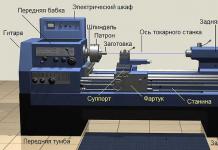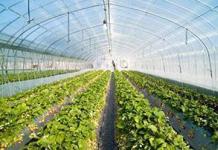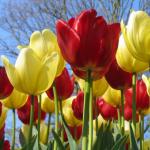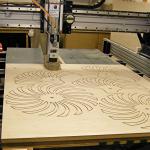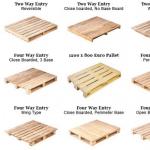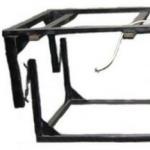What is the soil like in your garden? After all, the quality of fruits and vegetables depends on the composition and structure of the soil. It turns out that the earth also requires nutrition, timely preparation for assimilation of it, and improvement of the air and water regime.
What is the soil like in your garden? After all, the quality of fruits and vegetables depends on the composition and structure of the soil. It turns out that the earth also requires nutrition, timely preparation for assimilation of it, and improvement of the air and water regime.
What heals the soil, makes it fertile? The entire top layer of soil (up to 3 cm) is inhabited by microorganisms, bacteria, and useful mold. When digging too deep with the pass of the upper layer down, we disrupt the life of these microorganisms. and deprive the roots cultivated plantsaccessible form of various elements. So, let's learn the rule: do not plow deeply, do not dig, do not deepen the top layer. In order for the living world not to disappear in the soil, it is necessary to “feed” it with organic matter. In autumn, manure, humus, compost are scattered and filled into the soil to a depth of 15 cm or less.

And if there is no manure, then, simple straw, grass, or rather, dry hay, so that the soil does not become very sour. In the aisles, near the berry bushes, in the near-stem circles, grooves, grooves, pits up to 12 cm deep are dug, chopped straw, hay dust, crushed tree bark, sawdust, shavings are poured over with a talker (1 kg of semi-mature straw manure, compost per 1 bucket water). You can sprinkle with biohumus. Biohumus will help improve the soil in the garden and garden, provide itbiological fertilizer, which contains the richest flora of bacteria, microorganisms.

Novice gardeners do not follow the living world in the soil at all; in many, especially new areas, there are not even earthworms in the ground. This work cannot be postponed until autumn. A small amount of humus, vermicompost and, according to a strict norm, mineral fertilizers must be laid and shallowly filled now, after the earth has thawed.

This invisible, very complex and fertile world in the soil is created and lives when the earth is loose, permeated with air and oxygen. In the spring, melt waters compact the poor layers of the earth, devoid of organic matter, then it becomes covered with a dense crust, and life in such soil freezes. Timely loosening will help enrich the earth with oxygen and the microcosm will work for the benefit of plants.In order not to turn the soil into a dead substrate, often bring earthworms to the site along with humus, mulch in the beds with various organic matter, do not burn fires directly on the ground, do not remove all healthy plant residues from the site, but fill it shallow into the ground.

The structure of the soil can influence the growth rate and shape of a tree, for example, on heavy clay soil, the crown of trees droops and develops more slowly. On such soil, the roots do not have enough oxygen. It is useful to sow peas, buckwheat, beans, lupins and other herbs in the aisles and even in the trunk circle. Their roots improve breathability to the roots of fruit trees. In spring, it will be easier for trees to transfer melt water.
Natalia Gerasimova
Synopsis of OD in the preparatory group “Soil is a living earth. Who creates the soil?
Performed: educator MADOU CRR d / s No. 110, Kaliningrad Gerasimova N. E.
TARGET:
Introducing children to the concept the soil"based on experiments, its composition and value for all inhabitants of the plant and animal world Earth.
TASKS:
1) Cognitive research, to form the skill of experimental activities;
2) Communicative; to teach children to reflect, formulate and generalize the results of experiments, interact with each other;
3) Speech and game: to teach to communicate in the process of an ecological game, to encourage the development of fantasy, to form the ability to express one's thoughts; instill a respect for nature in the process of elementary labor activity;
4) Motor: enable active movement through the alternation of species activities: conversation, experiments, physical minute, work with the model " the soil- relationship with the environment, role-playing game, labor activity;
5) Perception of folklore: proverbs about earth.
EQUIPMENT:
PC and presentation "Composition soil"," diagram-poster composition soil", For experiments: samples soil, glasses of water, magnifiers, leaf samples, proverbs, for games: leaves, cups with earth(according to the number of children, headbands with the image of a tree - 2 pcs., and with the image of an earthworm - 2 pcs., a hoop - 4 pcs., 8 watering cans for watering.
Course of the lesson:
educator: - Nature has an amazing pantry, put a handful of grain in it in spring - and by autumn you will take a whole bag. A bucket of potatoes in this pantry turns into ten buckets. A handful of seeds becomes a scattering of cucumbers and tomatoes, carrots and beets, bunches of radishes and dill. What do you guys think, what is it? (answer Earth, the soil) .
Today we will talk to you about soil, find out what it consists of, who lives in it, and how we can save it.
What is the soil?
What do you think kids? (children answer)
teacher: - You know guys, but it turns out Earth exists for millions of years. Once upon a time, long ago the earth had no such soil like now, there were no plants. Seas and oceans arose, mountains, volcanoes appeared and then collapsed under the influence of heat, water and cold, and as a result, clay, sand and other minerals appeared, and then
plants and animals appeared. And now, tens of millions of years later, the planet The earth took the form, to which we are accustomed and now, we see such soil.
SHOW MULTIMEDIA PRESENTATION "COMPONENT SOILS".
Of course you are right soil is earth. We used to call it that by the name of our planet Earth. We all walk along earth. In dry weather, we grumble that there is a lot of dust, and in rainy weather, that it is too dirty. But dust and dirt are not proto Earth. Under our feet the soil is the correct name. She waters and feeds the plants in the warm season, when all nature blooms, and then the flowers turn into fruits (spring, summer, but this warm period is replaced by a cool season that brings us gifts - autumn, and there comes a moment when the trees begin to drop leaves, preparing for winter, they shelter their nurse- earth(or whatever they call it soil) thick blanket of dry leaves: yellow, red, orange, and we can also see the fruits that have fallen on earth: acorns, nuts, apples, pears, many of them are already covered with brown spots of rot. And they have one road, as the folk say proverb: "From lands have come, V the earth will be gone".
And what does it mean? (children's answers).
The fact is that there is only soil where plants grow and vice versa, the plants themselves are the source of material for the structure soil.
The secret is that all these fallen leaves and eyelids rot, and various underground inhabitants are involved in this, invisible to our eyes. - And who remembers what animals are involved in creating humus? (children's answers).
What do you think it consists of the soil? (children's answers).
That's right, children soil is sand, clay, humus, in soil has water, air. We will now test this experimentally.
EXPERIENCE #1. IN soil has air. It is breathed by many animals from the underworld. Take a glass of water and throw a ball into it soil. What conclusion can be drawn from the results of the experiment. Conclusion: we see bubbles that rise to the top. And this means that in soil has air.
EXPERIENCE #2. Compound soil. We place soil in a glass of water. After a while, we will see that sand settled at the bottom of the glass, the water turned cloudy from above due to clay, and garbage floats on the surface, plant roots - this is humus. Conclusion: the soil in its composition has humus, sand, clay.
EXPERIENCE #3. We also said that in soil has water That's why plants grow. - Where does it come from? soil? (children's answers).
That's right, kids. Water gets into soil when it rains or when watering. It penetrates deep and remains in free places between particles. soil.
Let's take an alcohol lamp, heat up a room land, covering the form with glass, and look at the glass. Conclusion: on the glass we see water droplets evaporated as a result of calcination soil which means you can live there.
Please tell me which soil do you know the inhabitants? (children's answers).
Who lives under earth?
The soil gives shelter to many plants and animals. So good they get along together. Look how they live, help each other. Plants grow in soil take nutrients from it. And the time comes - autumn, when plants: trees, shrubs, herbs, flowers fall off losing their leaves and fruits, and then the amazing work of the invisible world of animals begins, hiding under a layer of leaves and in earth(a story about the processing of leaves, so humus is created which provides plants with many nutrients.
Today it is cloudy, but a cheerful song about the sun calls us to have a little rest.
PHYSMINUTKA "RADIANT SUN".
Well done, what do you think the soil only for plants? (children's answers). Let's go to the poster and see what is important soil and for whom? Poster conversation.
Well, it's time to play the game. Now we will see how the leaves turn into soil.
GAME "TREES AND WORMS".
Children are divided into 2 teams. Each team has its own "worm" and soy "tree". At one end of the room on the floor on the same line, but at a distance, put two hoops. These will be the "minks" of worms. From each team, a child is allocated to play the role of an earthworm. He becomes in a circle, here, in a circle on the floor, there are cups with earth. At the opposite end of the room, put two more hoops for children, who will play the role of trees. These children also stand in a circle, they have leaves in their hands. On the head of the children are appropriate headbands. The rest of the participants stand next to each other. At the command of the host "Autumn" - tree children give a leaf to their participant, he runs to the worm and changes it to a glass of earth. Then he returns with it to the tree and gives it back. Team members repeat their actions until the last member brings land to your tree.
Today in class, you learned about the concept the soil. Please remember what it is. What does it consist of, who lives in it? (children's answers).
How can we save ground for these creatures?
What can we do?
What did we learn today? (children's answers)
Do you know guys, we were not in the Winter Garden for 2 days, and the soil has dried up these days, because there are some big plants growing here, they drank all the water, I suggest you do a good deed - water soil and she will water the plants. What do you think they would tell us the soil and the plants of the Winter Garden, if they could speak? Are we taking care of them?
What proverbs about earth you know?
Without a host the earth is an orphan.
IN you won’t lay the ground - and you won’t take it from the ground.
Where not land there is no grass.
Earth is the provider.
And now, I suggest you draw one of the "underground inhabitants" that you liked the most. You can draw a garden or a field that yields crops. Your imagination has no limits. You are such good fellows, you worked very well today.
Put sticks in wheels, tie hands and feet, put obstacles, confuse maps, confuse plans, put up obstacles, knock the ground out from under your feet, put sticks in wheels, cut off oxygen, prevent, spoil the whole mass, interfere, get confused, ... ... Synonym dictionary
prepare the ground- for whom, for what. PREPARE THE SOIL for whom, for what. Book. Create conditions for someone or something. We passed through the area where the ground for partisan affairs had already been prepared, by underground organizations and seething among the people ... ...
prepare the ground- PREPARE THE SOIL for whom, for what. PREPARE THE SOIL for whom, for what. Book. Create conditions for someone or something. We passed through the area where the ground for partisan affairs had already been prepared, by underground organizations and ... ... Phraseological dictionary of the Russian literary language
For whom, for what. Book. Create conditions for the implementation of what l. whom l. F 2, 56 ... Big dictionary of Russian sayings
Cm … Synonym dictionary
FEED, feed, feed, inconsistency. (book). 1. whom what. To feed, supply with food, introduce food into someone's body. Feed the patient four a day. || Provide food, livelihood. Literary work feeds me. 2. what. Serving... ... Explanatory Dictionary of Ushakov
File:SAVAK logo (Expired).PNG Country ... Wikipedia
Abdel Kerim Qassem عبد الكريم قاسم ... Wikipedia
- عبد الكريم قاسم ... Wikipedia
Books
- , Heath Chip. About the book The book is about the key components of moments that are remembered for a lifetime or radically change it. And how to create such moments. How can a teacher deliver a lesson that will…
- The power of the moment. How to fill life with bright and memorable events, Heath Chip. The book is about the key components of moments that are remembered for a lifetime or radically change it. And how to create such moments. How can a teacher deliver a lesson that will be remembered by 20…
How to make the soil fertile? The question is interesting. There are just no answers! Some advise to dig deep into the ground almost every month. Others - just bring manure and not rack their brains. Only where to get the funds to purchase it, for some reason they do not tell.
And I remember my grandmother alone. We knew her for many years, and for as long as we knew, we never saw a tractor or heaps of manure in her garden. We observed with a shovel only during planting and harvesting potatoes. But what is surprising is that the land on her site was black, very loose. And the harvests! I confess, I myself bit my lips with envy. Her advice immediately began to come to mind.
What came out of the earth, then return
Never take weeds that have been weeded outside the site, except in cases of infection with diseases. Always put them either in a compost heap or as mulch right in the garden.
A neighbor spent every free minute looking for grass, branches, sawdust. Sometimes she even took our weeds from the common stitches and laid them out at home. It’s funny to us, but she’s how many birds with one stone:- A thick layer of mulch prevents weed seeds from germinating, plus maintains a normal level of soil moisture.
- All plant waste rots over time, increasing soil fertility.
- Under such a nutritious litter, earthworms live in whole colonies. Everyone knows about their usefulness.
Just do not impose entire plant residues on the beds. If possible, try to reduce them. So the process of increasing fertility will go much faster and better.
Forget the shovel
The neighbor never dug up her garden. And the tractor did not plow. However, in the section, the leg sank above the ankle. Now I know why she had lupins and beans everywhere. They have thick long roots that leave decent passages in the soil after rotting. That is why the earth was loose and fluffy.
By the way, in the fall, she never uprooted plants. It will pass with a shovel or a hoe, cut it down at ground level, and leave it like that until spring. Only in the spring did not remove this tops, as we used to do. She raked a hole right in the mulch, and already planted her simple seeds, tubers, sprouts there.
And all the operations were carried out by the grandmother with an ordinary garden chopper. Now it is completely replaced by a flat cutter. You just need to get used to it and set the desired angle of inclination strictly for your height.
Oats and rye put in the ground
Let us put aside philological research on the existence of such a word. Let us better pay attention to this: in natural conditions, the earth is never bare. There is always something growing on it or a thick layer of mulch. But fertility is not reduced! Here and at the neighbor we never saw the bare earth.
Then they did not know the word green manure. Haven't heard of mustard either. But they perfectly solved the problem by sowing oats and rye. The neighbor always sowed any vacant patch of the garden. Even the smallest garden. But it did not give a large harvest. As soon as the seedlings reached a height of about 17-21 cm, the grandmother passed with an ordinary scythe.
Cut low, almost to the ground. I just didn’t lay it in rows, like hay in a meadow, but on the contrary, I tried to scatter the greens wider. As she grew, she again picked up a scythe. And so on until frost. During this time, a decent layer of mulch was obtained. The roots that remained in the ground also did a useful job. After all, many people know that where rye is sown, even the tiniest weed will not slip through. The fibrous root system just won't let through.
Isn't it fat?
Once the wind brought us the specific smell of manure. What's happened? The neighbor doesn't seem to be welcoming. Curiosity overpowered the sense of tact, went to look. I look, a neighbor scoops something with a liter mug from a large barrel, adds it to a bucket of water, and waters her plantings. She asked what the stink was.
It turned out to be a mess. Now we call this liquid liquid green manure. Hence the smell. Anyone who has ever tried to prepare such a mixture will not forget the aroma. But the most important thing is that from such top dressing the plants grow right before our eyes. They don't care about amber, the composition is much more important. And in a properly prepared top dressing, all the most necessary trace elements, and in an easily digestible form. Catch the recipe, the neighbor is not sorry:
- 100 liters of water
- 0.5 kg raw yeast
- 1 liter old jam
- any fresh herb, 10 kg
All this stuff is placed in a suitable container, mixed well and left in the sun for 5-7 days. Grandma told me to cover it with a lid. Not from the stench, "maybe be patient." In order "so that the birds do not get sick, they also come to drink."
After a week of infusion, the solution is mixed with ordinary water in a ratio of 1 to 10, and the plantings are watered. You can even just spray directly on the foliage.
But, this is not only effective top dressing. The bacteria living in this mixture have a very favorable effect on the overall fertility of the soil. We are already aware of this. And then they didn’t think about it, it helps and okay.
To my question, is it not easier to bring and scatter manure around the site, the answer was received: “Look at my garden. Wouldn't it be too fat?" Yes, much fatter, when cabbage did not grow less than 12 kg. And from 5 meters of a bed there are 4 buckets of potatoes, the size of an adult fist, or even more.
So don't discount old people. Even before, without any science and experience, they knew how to make the soil fertile. Therefore, the gardens were kept large, because it is easy and pleasant to cultivate such land. Of course, this is not a matter of one season. But if you wish, you can grow a garden on stones. It just takes a little effort. Just don't quit what you started. Keep working, and your site will give you royal gifts.
How to make the soil fertile? First you need to realize that this is the principle of agriculture, and not a machine of manure or humus. Still, it is very difficult to abandon the usual stereotypes, hammered from childhood. But you can try it first on a small plot of land. And only then dance from the results. It is possible that at first you will be such a laughingstock for the neighbors. But in the fall they will have to change roles with you. Then see who has the last laugh.
Video: how to enrich the earth
National liberation revolution - a revolution that arises due to the national liberation movement and is aimed at the destruction of foreign domination, the achievement of national independence, the elimination of national colonial oppression and exploitation, the realization by the nation of its right to self-determination, to create a national state.
Class cooperation is the principle of social organization, which is an integral part of fascist philosophy. It is based on the belief that the division of society into classes is a positive and important aspect of civilization. In the words of Benito Mussolini, "fascism affirms an irremediable, fruitful and useful inequality of people." Given this premise, the fascists concluded that the maintenance of social hierarchy is in the interests of all classes, and therefore all classes must cooperate in its defense. Both classes...
Social explosion - an outbreak of violence against the backdrop of protracted social instability. As a rule, a social explosion is associated with social disunity and a drop in the standard of living of a certain category of the population (for example, associated with mass layoffs). Sometimes the term social explosion is used as a euphemism for revolution, uprising, or unrest. In historical literature, the term "social explosion" is found in Toynbee ...
Cultural hegemony is a concept of Marxist philosophy that characterizes the dominance of the ruling class over a culturally heterogeneous society. Influencing the totality of ideas, beliefs, values and norms expressed in the culture of society, the ruling class imposes its own worldview as a generally accepted cultural norm and a generally valid dominant ideology. Such an ideology legitimizes the social, political or economic status quo, which in reality is only a social construct...
Political sectarianism (lat. Secta) - doctrine, direction, school) - a set of oppositional political views and actions of certain groups of like-minded people who become isolated in their narrowly selfish interests, lose ties with allies and the social base, separate from the generally chosen course of a particular political movement, parties, public organizations and turn into closed self-isolated structures.

